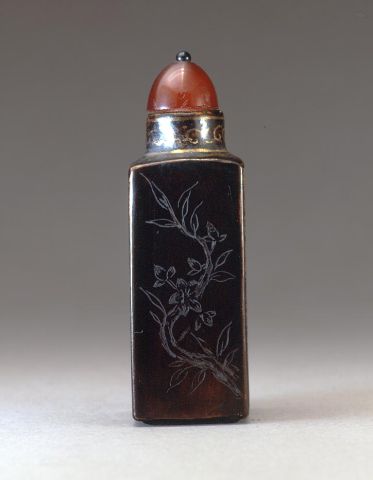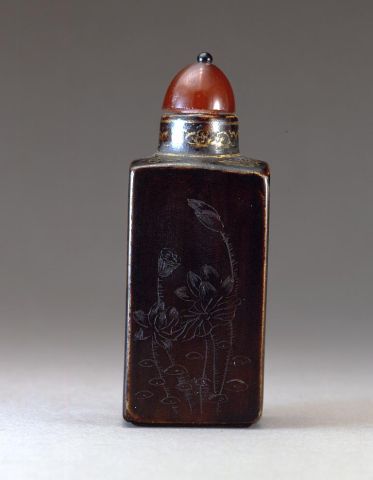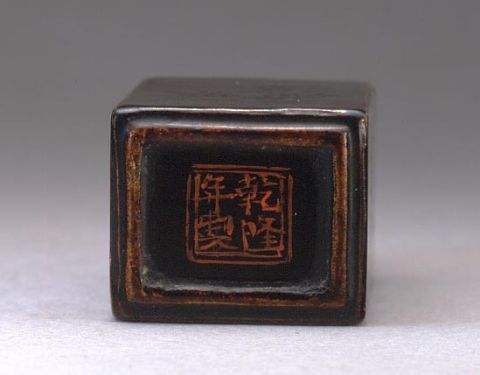




Bottle ID: 193
RECTANGULAR, INCISED FLOWERS
年代: 1736-1795
高度: 58 mm
Lacquer on wood, dark brown, of rectangular form, lightly etched on each of the four sides with flowers representing the Four Seasons; the peony, lotus, chrysanthemum and prunus; the slightly rounded shoulders gilded with four butterflies, the neck with a classic scrolling pattern, with a shallow square footrim, the base with a red enamel four character Qianlong nianzhi mark within a double square in regular script and of the period.
Possibly imperial, attributed to the Palace Workshops.
类似物品:
Crane Collection no. 281
来源:
Clare Lawrence Ltd.
Sotheby's, Sussex, U.K., June 25th, 1991, lot 198
Published:
Lawrence, Clare. Twenty-Five Eminent Chinese of the Ch'ing Period, 1993.
The lack of similar published examples for this bottle focuses attention back to the bottle itself and to the possible conclusions that may be drawn from a visual analysis only. At first glance, there appears to be a similarity between this bottle and Crane no. 279 in that they are both lacquered on wood with incised floral decoration. However a closer examination shows that the process of incising is different on the two bottles. Crane no. 279 follows the typical ‘iron-brush’ technique employed by lacquer artists such as Lu Dong who produced snuff bottles amongst other scholars’ desk objects. The technique employed on this bottle, which changes the style of the decoration, is to create the design with a series of fine incised thin lines rather like a drawing on paper than a carving into the surface. In fact the incising on this bottle is more akin to the decoration on Crane no. 281, an incised jet bottle that is also dated to the 18th century. It is intriguing that that gilding has been used on the neck as a border and on the shoulders, but not filled into the incised design as there are no traces of gilding when viewed under magnification. Another unique difference is the red lacquer Qianlong mark on the base, showing that special care has been taken with this bottle, when it could so easily have had either an incised and filled mark or a gilded mark.
< Back to full list
 English
English 中文
中文